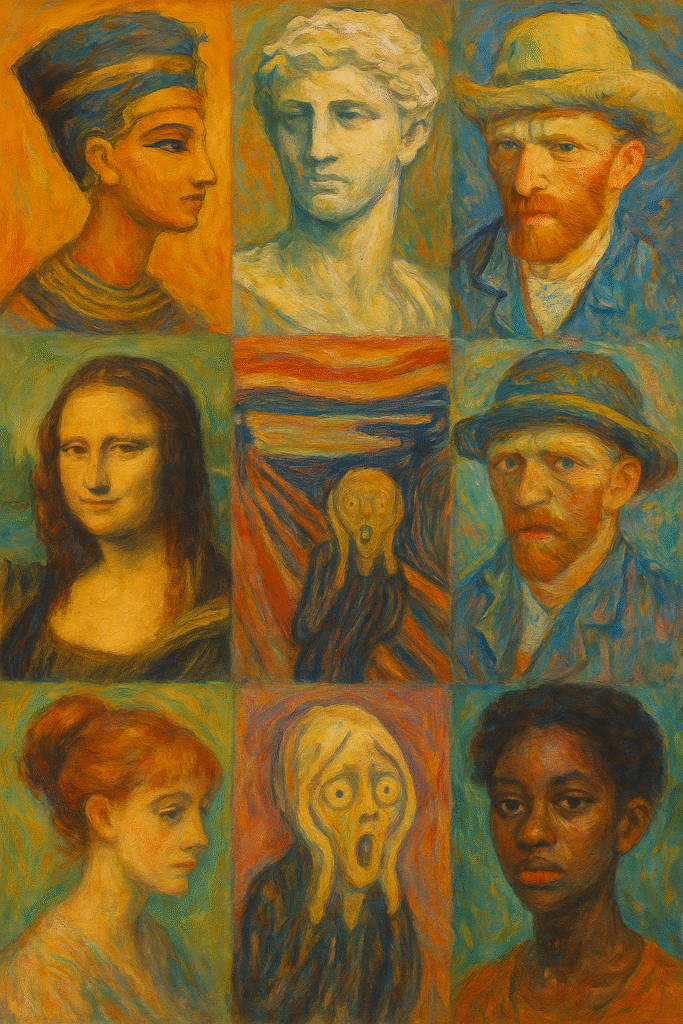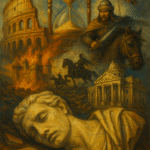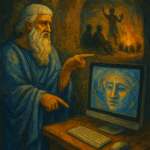The symbolism of the human face in art has intrigued artists, philosophers, and historians for centuries. From ancient cave paintings to contemporary masterpieces, the portrayal of the human face reflects not only aesthetic choices but also deep cultural meanings. This article explores how various art movements have interpreted the human face across ages, revealing the complexities of identity, emotion, and communication.
Understanding the Human Face in Art History
Art interpretation of the human face has evolved dramatically over centuries. Our journey begins in ancient civilizations, where the face was often idealized to represent gods or rulers. Ancient Egyptian art, for instance, depicted faces in a stylized manner, emphasizing symmetry to showcase divine beauty.
Early Artistic Representations
In classical Greece, realism emerged. Artists like Phidias and Polykleitos captured the natural form and emotion, focusing on the importance of face in art to portray dignity and virtue. The history of facial art began to reflect a shift from idealism to realism, laying the groundwork for future interpretations.
The Renaissance: A New Era of Expression
The Renaissance marked a turning point in art history. Artists like Leonardo da Vinci and Michelangelo prioritized emotional depth in their works. Da Vinci’s _Mona Lisa_, for example, utilizes subtle facial expressions to evoke a connection with viewers, highlighting the symbolism of the human face in art as an avenue for exploring human emotion.
The Baroque Movement: Faces and Dramatization
During the Baroque period, artists such as Caravaggio depicted faces with dramatic lighting and exaggerated expressions. This era emphasized the portrayal of human emotions, showing not just beauty but also vulnerability. Caravaggio’s work illustrates how the human face can convey intense narratives, further enriching the artistic representation of faces.
Art Movements and Emotional Expression
As art progressed, different movements brought unique interpretations of the human face.
Impressionism: Capturing Fleeting Moments
Impressionist artists like Claude Monet and Pierre-Auguste Renoir used light and color to portray faces in motion. This shift represented a new facet of the human face in art, focusing on the impermanence of moments. Impressionism invites the viewer to contemplate the evolution of face in art across time, often blending background and foreground to create a singular emotional experience.
Expressionism: Emotion Over Form
In the early 20th century, Expressionism took the interpretation of the human face even further. Artists like Edvard Munch used distorted features to express anxieties and emotional turmoil. His famous piece, _The Scream_, exemplifies the art representing human emotions through exaggerated facial expressions, showing how the essence of the human face informs deeper narratives.
The Influence of Contemporary Art
Today, contemporary artists continue to explore the human face through different lenses.
Digital Art and Identity
Modern technology has allowed for new forms of artistic representation. Digital artists use social media platforms to investigate identity through the human face. The portrayal of identity in art today can range from traditional portraits to digital recreations that challenge societal norms and expectations.
Activism and Representation
Contemporary movements often use the human face to convey messages of social justice, identity, and activism. Artists like Ai Weiwei use their medium to challenge political regimes and highlight human rights issues. His work signifies how the symbolism of the human face in art transcends aesthetics to become a platform for activism.
Engage with Art
Explore how these various representations of the human face in art resonate with you. Engaging with art allows for a deeper understanding of ourselves and societal narratives. Whether you visit a gallery or explore online platforms, consider how the human face articulates emotions and identity.
Conclusion: The Timeless Symbolism
In conclusion, the symbolism of the human face in art remains a compelling subject that traverses history and culture. From ancient sculptures to modern digital art, the human face serves as a canvas for emotional expression and identity exploration. As we continue to engage with art, understanding its evolution can enhance our connection to history, culture, and ourselves.
Further Reading and Resources
* For deeper insight into the history of artistic representation, visit Academic Research Portal.
* To explore statistical data on art movements, check out the Government Research Database.
Here is a summary of the key points explored in this article:
* The Evolution of Facial Art: A brief history from ancient to contemporary times.
* Emotion and Identity: How different movements shape our understanding of faces in art.
* Call to Action: Encourage readers to explore art and its meanings.
Engage with the captivating world of artistic interpretations of the human face. Discover how art continues to reflect our collective human experience.


